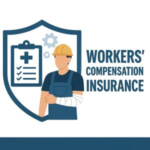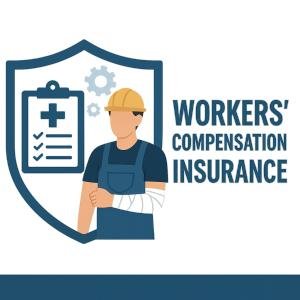In the highly regulated landscape of home health care, ensuring compliance with workers’ compensation requirements is both a critical and complex task for agency administrators. Preparing for a workers’ comp audit can often be a daunting prospect, with unexpected challenges leading to costly repercussions if not managed correctly. This article provides no-surprise strategies tailored specifically for home health agencies, offering practical guidance to streamline audit preparation, minimize risk, and safeguard financial stability. By adopting these best practices, agencies can navigate the audit process with confidence and maintain operational integrity.
Table of Contents
Understanding Key Compliance Requirements for Workers’ Compensation Audits
Successfully navigating workers’ compensation audits demands a clear grasp of regulatory obligations and thorough documentation. Key elements include accurate payroll records, proper classification of employees, and strict adherence to state-specific insurance laws. Missing or incorrect classifications often trigger costly audit adjustments and penalties, making it crucial to maintain obvious job descriptions and update any changes in operational scope instantly.
Beyond classifications and payroll accuracy,agencies must also focus on maintaining extensive claims and loss history documentation.detailed records not only expedite the audit process but can also influence premium adjustments in your favor. The table below outlines essential compliance checkpoints and their audit impact to help prioritize preparation efforts:
| Compliance Checkpoint |
Purpose |
audit Impact |
| Payroll Accuracy |
Ensure all employee wages are reported |
prevents premium underpayment penalties |
| Employee Classification |
Correctly identify job roles |
Avoids costly reclassification adjustments |
| Claims Documentation |
Maintain loss history records |
Supports premium rate justification |
| Policy Compliance |
Adherence to state insurance regulations |
Reduces audit discrepancies and fines |
Implementing Robust Documentation Practices to Mitigate Audit Risks
Maintaining comprehensive and precise documentation is essential to safeguard your agency against potential audit disputes.Detailed records not only support claims made but also demonstrate compliance with regulatory requirements. Start by implementing a standardized documentation system that captures all necessary details,from employee work hours to their specific duties and any workplace incidents. Digital platforms with audit trails can enhance data integrity and facilitate quick retrieval during audit processes. Remember, every entry should be date-stamped and properly authenticated to prevent challenges related to record validity.
Building a culture of consistent documentation requires ongoing training and clear communication with your staff. Incorporate regular internal reviews to verify that documentation adheres to established protocols, looking out for gaps or inconsistencies that might raise red flags. Use the table below as a quick-reference framework for essential documentation elements your agency should maintain:
| Documentation Element |
Purpose |
Recommended Frequency |
| Time sheets |
Verify employee work hours |
Daily |
| Job Descriptions |
Clarify assigned duties and roles |
Annually or upon role changes |
| Incident reports |
Detail workplace injuries or accidents |
Immediately after occurrence |
| Training Records |
Document compliance and skill updates |
Ongoing,per training session |
- Consistency: Ensure records are updated without delays to maintain accuracy.
- Accessibility: Store documents in secure yet easily retrievable formats.
- Compliance: Align documentation with state and federal workers’ comp mandates.
Leveraging Technology solutions for Accurate Payroll and Claims Reporting
Integrating advanced technology solutions streamlines the management of payroll and workers’ compensation claims reporting, ensuring precision and compliance. Digital platforms equipped with automated data validation minimize human error, reducing the risk of costly discrepancies during audits. Utilizing cloud-based payroll systems offers real-time visibility into employee hours and wage details, which facilitates accurate classification and timely updates critical to workers’ comp audits. Additionally, AI-driven analytics can flag unusual patterns or inconsistencies early, allowing agencies to address potential issues proactively.
employing these tools not only enhances openness but also supports detailed audit trails that satisfy regulatory requirements efficiently. Below is a snapshot of key features that technology solutions bring to the table for audit readiness:
- Automated Timesheet Integration: Seamlessly captures and syncs employee hours
- Real-Time Payroll Monitoring: Ensures consistent wage and classification accuracy
- Comprehensive Reporting Dashboards: Provides quick access to audit-ready documentation
- Secure Cloud Storage: Safeguards sensitive data with encrypted backups
| Feature |
Benefit |
audit Impact |
| AI classification |
Automatically categorizes payroll data |
Reduces misclassification risk |
| Data Sync |
Links timesheets to payroll |
Enhances accuracy in claims reporting |
| Compliance Alerts |
Notifies of regulatory changes |
Keeps agency audit-ready |
Developing Proactive Communication Strategies with Auditors and Stakeholders
Build trust early by setting clear expectations with auditors and stakeholders. Initiate conversations well before the audit begins to clarify timelines, documentation needs, and key risk areas. Maintaining transparency reduces the chances of unexpected findings and establishes a collaborative atmosphere where questions and concerns are addressed promptly. Regular updates and checkpoints help keep all parties aligned, ensuring any discrepancies are identified and resolved proactively rather than reactively.
Implement practical communication tools and routines to streamline interactions:
- Designate a dedicated liaison for all audit-related correspondence
- Use shared digital platforms for real-time document sharing and feedback
- schedule routine progress meetings with stakeholders to track milestones
- Prepare concise status reports highlighting risk mitigation efforts and current compliance
These strategies not only enhance transparency but also empower your team to control the narrative of the audit process, minimizing surprises and facilitating quicker resolutions.
Q&A
Q&A: Home Health Agency Workers’ Comp Audit Preparation: No-Surprise Strategies
Q1: What is a workers’ compensation audit for a home health agency?
A workers’ compensation audit is a thorough review conducted by insurance carriers or third-party auditors to verify the accuracy of payroll and classification data used to calculate workers’ compensation premiums. For home health agencies,this process ensures that all employee wages related to client care and administrative functions are correctly reported and categorized.
Q2: Why is audit preparation important for home health agencies?
Audit preparation is critical because discrepancies or errors can led to unexpected premium increases, penalties, or even audit disputes. Proper preparation minimizes surprises, ensures compliance with insurance policies, and helps control overall workers’ compensation costs.
Q3: what are common challenges faced by home health agencies during a workers’ comp audit?
Common challenges include misclassifying employees, incomplete payroll records, fluctuating workforce numbers due to part-time or per-diem staff, and difficulties in accurately documenting subcontractors or autonomous contractors. These challenges can lead to inaccurate premium calculations and potential disputes.
Q4: What no-surprise strategies can home health agencies implement to prepare for a workers’ comp audit?
- Maintain Accurate Payroll Records: Ensure payroll data is comprehensive, timely, and segmented by job classifications.
- Classify Employees Correctly: Regularly review employee roles to assign appropriate workers’ comp classifications that reflect actual job duties.
- Document Subcontractors and Independent Contractors: Keep clear contracts and verify if these workers should be reported under your policy or separately.
- Conduct Internal audits: Periodically perform self-audits to identify and rectify discrepancies before the insurer’s review.
- Engage with Experienced Professionals: Work with insurance brokers or legal advisors specializing in workers’ comp audits for tailored advice.
- Prepare Supporting Documentation: Have timesheets, contracts, and payroll reports organized and readily available.
Q5: How can technology assist in audit preparation for home health agencies?
Technology solutions such as payroll software integrated with workers’ comp classification features can automate tracking, reporting, and error detection. Digital record-keeping facilitates quick retrieval of documents during an audit and reduces human error in classification and payroll reporting.
Q6: What should a home health agency do if discrepancies are found during the audit?
If discrepancies arise, promptly communicate with the auditor to clarify and provide necessary documentation. If needed, negotiate adjustments or appeals through your insurance broker. Early engagement helps avoid penalties and builds trust with the insurer.
Q7: Are there benefits to proactive audit preparation beyond avoiding surprises?
Yes, proactive audit preparation can improve workforce management, optimize payroll processes, reduce workers’ comp insurance costs, and strengthen overall compliance.It also enhances the agency’s financial forecasting and risk management strategies.
Q8: When should home health agencies begin preparing for a workers’ comp audit?
Preparation should be ongoing but intensify several weeks prior to the scheduled audit notification. Continuous record-keeping and periodic self-audits throughout the year position agencies to respond effectively when the audit occurs.
In Conclusion
In today’s complex regulatory environment,thorough preparation for a workers’ compensation audit is not just advisable-it’s essential for home health agencies aiming to mitigate risks and ensure compliance. By implementing proactive strategies such as meticulous documentation,accurate payroll reporting,and regular internal reviews,agencies can confidently navigate the audit process with minimal disruptions. Embracing these no-surprise practices not only safeguards financial integrity but also fosters a culture of accountability and operational excellence. Ultimately, well-prepared agencies position themselves for sustained success, enabling them to focus on their core mission of delivering quality care.
“This content was generated with the assistance of artificial intelligence. While we strive for accuracy, AI-generated content may not always reflect the most current information or professional advice. Users are encouraged to independently verify critical information and, where appropriate, consult with qualified professionals, lawyers, state statutes and regulations & NCCI rules & manuals before making decisions based on this content.









